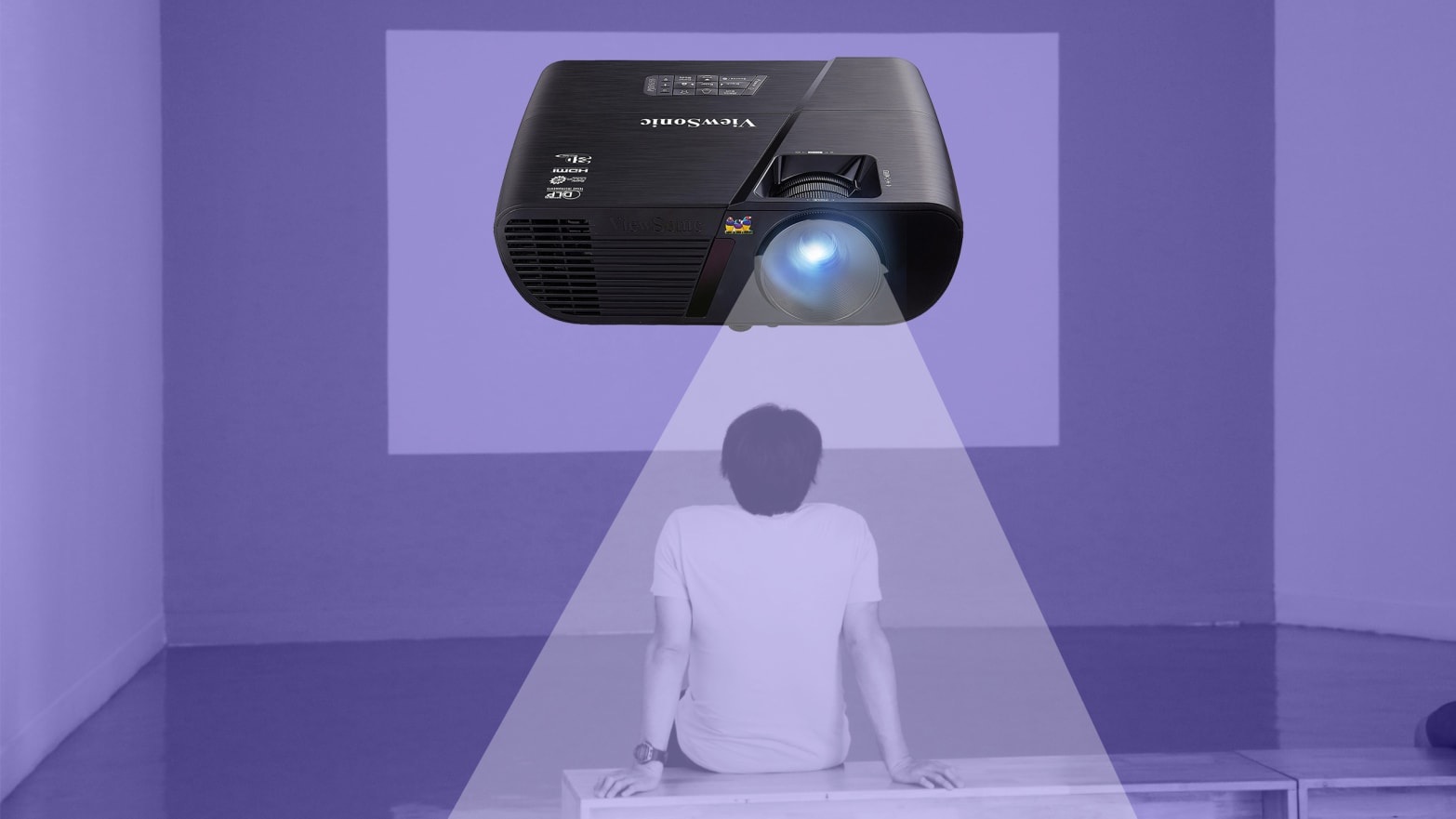A digital projector is a device that connects to a computer or similar device through wiring to allow the computer monitor screen to be magnified and projected onto a screen. The standard digital projector connects via VGA cable directly to your computer or uses component video cables (red, green, and blue plugs) to connect to your DVD player, HDTV, set-top box, or video camera. However, to be safe, always make sure to verify that the projector has the correct outputs to connect to the device or devices you want to connect it to. The characteristics of a quality digital projector should include:
Digital Projectors - Resolution
The resolution of the digital projector refers to the pixel density of the image to be projected. A digital projector has two resolutions, natural resolution, and maximum resolution. Natural resolution is the standard pixel size of the projected image; the maximum resolution is the maximum capacity of the projector. Typically a digital projector should be able to accept 800x600, 1024x768, or 1280x1024 resolutions, however, it is not the size of the resolution that the digital projector can accept that is important, but rather the native resolution of the projector. The higher the native resolution of the project or the higher the color quality, or should I say color density of the projected image.
Digital Projectors - Lumens
Lumens refer to the brightness of the projected image. Quite simply, the higher the lumens, the brighter the projection. Brightness ratings, measured in lumens, are typically lower for home theater models than for office models. The size of the room and the size/distance of the screen will also affect the need for more or fewer lumens. A projector can have a great lumen rating, but if the contrast ratio is low, your image will look washed out. For low-ambient or lights-off productions, a 1000-1500 lumens rating may be sufficient. If you need a very bright projector (3000 lumens or more), an LCD projector is probably your best option. Today's lowest lumen projectors start at around 700 lumens and go up to a staggering 15,000 lumens. A good rule of thumb is that it's always better to err on the side of too many lumens than too little. You can buy a 5000 lumens projector. It is a very bright and powerful projector.
Digital projectors: projection distance
Projection distance refers to the maximum distance that your digital projector can be placed away from the screen before image resolution, brightness, and therefore image quality is affected. The longer the projection distance, the larger the image projected on the screen. The projection distance of the digital projector is an important key feature if you plan to use the projector in a large room or outdoor environment; however, for the home user, today's entry-level digital projector has a projection distance of more than enough to meet your home movie needs. theater.
Digital projectors - aspect ratio
Aspect ratio refers to the ratio of the width to the height of the projected image. There are three standard aspect ratio settings that you should make sure your digital projector projects are: 1: 1, 4: 3, and 16: 9. Having a digital projector that has aspect ratio options is important as the different Media are delivered in different aspect ratios. For example, standard video is delivered with an aspect ratio of (4: 3), while HDTV uses a (16: 9) format. If your digital projector had a locked aspect ratio of (4: 3), you would not be able to fully experience the viewing experience of movies or widescreen images. With more and more digital media, including online and cable TV networks, adopting the (16: 9) format, this is something you should definitely check out.
Display functions: fixed keystone correction and lens shift functions
To ensure that you can maximize the quality of the digitally projected image on your presentation screen, make sure your digital projector has a fixed keystone correction and a lens shift function. Fixed keystone correction shoots the image above the lens so that the projector itself doesn't block the viewer's line of sight. Similarly, the lens shift function allows you to move the image up and down and left and right. A useful tool for adjusting the position of the projected image on the
Hi, My name is HRIDOY AHMED & I'am a Full-time freelancer, Veteran of SEO and Backlink building with 3+ years of experience. I offer a Variety of Different SEO services which are GUARANTEED to boost your website's SEO> Feel Free to contact me with questions you may have. I have huge knowledge On this service which I offer you.
link to find me: https://www.fiverr.com/hridoy941
Thank You

Post new comment
Please Register or Login to post new comment.